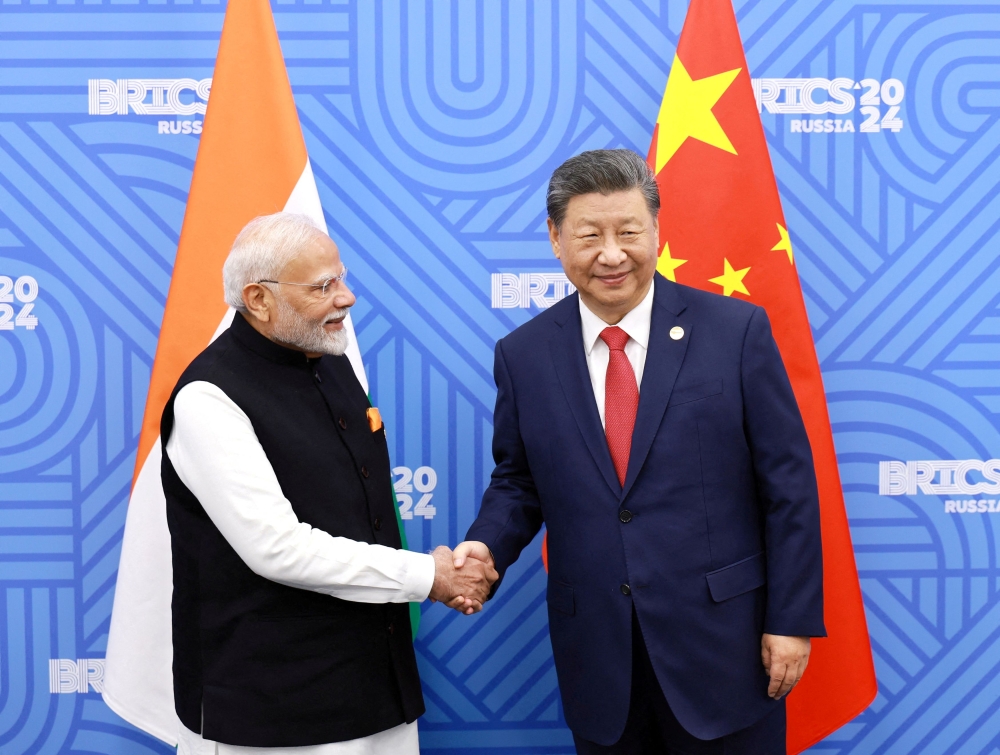
Has the elephant begun stomping in the ground of the bald eagle? — Phar Kim Beng
Friday, 15 Aug 2025 1:00 PM MYT
AUGUST 15 — When reports emerged that India had “sent a circular to BRICS granting full rupee access” for trade settlement, the immediate interpretation was that the world’s most populous democracy had finally decided to stomp its feet on the monetary turf long dominated by the United States.
After all, in the lexicon of geopolitics, the “elephant” is India and the “bald eagle” is America. The symbolism was irresistible.
But reality, as is often the case in the intricate dance of international finance, is more layered than headlines suggest.
On August 14, 2025, India’s Ministry of External Affairs and the Reserve Bank of India (RBI) moved quickly to clarify that de-dollarisation is not on the country’s financial agenda.
Instead, New Delhi is pursuing a pragmatic pathway: expanding the use of the Indian rupee for cross-border trade, especially among BRICS members and key bilateral partners, without attempting to dethrone the dollar outright.
This does not mean nothing significant is happening. Far from it.
The RBI has been quietly removing roadblocks to rupee-based trade settlement, with Special Rupee Vostro Accounts (SRVAs) at the heart of the effort.
On August 12, foreign banks holding these SRVAs were allowed to invest their entire rupee surplus in Indian government securities, without having to register as foreign investors.
A day later, the RBI streamlined rupee–rouble trade with Russia, easing payment delays and simplifying the process for authorised banks.
An earlier circular, issued on August 5, now permits Indian banks to open SRVAs without prior RBI approval — a bureaucratic bottleneck that often deterred foreign partners.
The geopolitical context is just as important as the monetary mechanics.
Within BRICS, the talk of a “common currency” remains highly premature, and member states diverge sharply on feasibility. Yet the bloc agrees on one thing: overreliance on the dollar exposes them to sanctions risk, interest rate shocks, and external policy shifts beyond their control.
India’s rupee-settlement push is therefore part of a broader trend — seen in China’s yuan-clearing banks across Eurasia and Brazil’s push for more real-denominated trade — towards hedging, not replacing, the dollar.

Chinese President Xi Jinping and India Prime Minister Narendra Modi meet on the sidelines of the BRICS summit in Kazan, Russia October 23, 2024. — China Daily pic
For the United States, this is not yet an existential threat to dollar dominance. The greenback still accounts for nearly 60% of global reserves and anchors the bulk of energy trade.
But the message from New Delhi is subtle and unmistakable: friends and partners are building financial escape hatches, not out of hostility, but out of prudence. India is, in effect, asserting monetary sovereignty in a way that aligns with its strategic autonomy doctrine — a doctrine that keeps its ties with Washington, Moscow, and Beijing all intact.
The next test will come on August 20–21, when an Indian delegation visits Moscow to expand rupee-based settlements in energy, defence, and high-technology trade.
If successful, this could cement the rupee’s role in sanctioned economies while reinforcing India’s position as a reliable counterparty in an era of transactional geopolitics.
Critics will argue that without deep liquidity, global acceptance, and the kind of trust the dollar enjoys, the rupee will remain a regional instrument at best. They are correct — for now.
But currency influence often grows in increments, through small but irreversible institutional shifts. Allowing foreign banks unrestricted access to invest rupee surpluses in Indian debt is one such shift.
So, has the elephant begun stomping in the ground of the bald eagle? Not in the sense of a frontal challenge. What we are seeing instead is the elephant learning to move with deliberate weight, pressing new footprints into the global monetary soil — footprints that may, over time, alter the shape of the terrain.
If the bald eagle notices the ground subtly changing beneath its talons, it would do well to remember that in today’s multipolar financial world, the challenge to dominance rarely comes with a trumpet blast. It comes with quiet but purposeful steps.
* Phar Kim Beng is a professor of Asean Studies and Director of the Institute of Internationalization and Asean Studies at the International Islamic University of Malaysia.
A failed effort!
ReplyDeleteIndian isn't a major world trader. In 2023, India's exports accounted for 1.71% of global imports. Most of them r denominated in US$ with Rupee showing an insignificant . Rupee is a closed currency due to Indian govt's manipulative design & world acceptance.
The US $ denominated debt remained the largest component of India's external debt with a share of 53.4 per cent at end-September 2024, followed by Indian Rupee (31.2 per cent), Japanese Yen (6.6 per cent), SDR (5.0 per cent) and Euro (3.0 per cent).
The Russian accumulated Rupee holding, due to his acceptance of Rupee for their oil trade, is a lesson that all trading countries r well awards. Russia couldn't use that Rupee to buy anything else in the world but only with India. & India has very little goods/ devices that the Russians need.
That's the ONLY reason now that India has to arm-wisting BRICS to accept Rupee as a Special Rupee Vostro Accounts (SRVAs) at the heart of the effort to expand the international viability of Rupee payment potency.
However, with all those political monkeying acts done by India within the BRICS meetings, India is slowly been isolated & ignored.
Soon, 阿三哥 would have to kowtowing to Trump for leniency for his crybaby acts!